According to the strategic planning of national grid construction and the emphasis on strengthening power grids, rural power grid intelligence is being piloted as a key project to drive innovation and advancement in power distribution technologies. This year, in July, the State Grid drafted and proposed the latest technical standards to regulate the development of intelligent distribution terminals. So, what exactly do these latest technical indicators entail?
To accelerate the construction and renovation of distribution networks, promoting their transformation and modernization, the National Energy Administration released the "Distribution Network Transformation and Reform Action Plan (2015-2020)." This plan emphasizes significant investments in the distribution network, with total spending expected to exceed 2 trillion yuan from 2015 to 2020. Through its implementation, by 2020, the level of intelligent construction and application in the distribution network will significantly improve, with power supply reliability reaching 99.99%, effectively addressing the issue of weak urban and rural power grids.
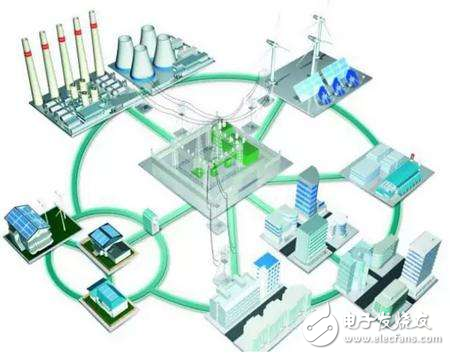
*Figure 1: Distribution Network*
In recent rural power grid renovations, the State Grid has been upgrading various power supply equipment across large areas. Among these, JP cabinets are being updated within transformer stations. JP cabinets refer to integrated distribution transformers, commonly known as power distribution boxes, as shown in Figure 2. Even though they may seem ordinary, they are ubiquitous, found almost everywhere around us.
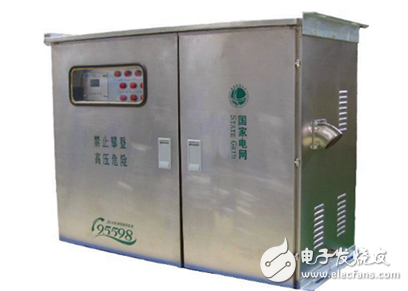
*Figure 2: Rural Network Transformation JP Cabinet*
Who, then, is the focus of these new national grid indicators? That brings us to today’s protagonist—the “intelligent distribution terminal,†housed inside the JP cabinet, as depicted in Figure 3:
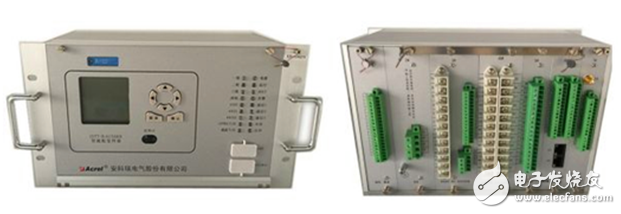
*Figure 3: Intelligent Distribution Terminal*
First, the Latest Intelligent Distribution Terminal Technical Requirements
Based on the operational characteristics of the rural power grid, the State Grid Corporation has drawn lessons from past experiences in agricultural network construction and use, standardizing the technical requirements for intelligent distribution terminals. These detailed requirements cover environmental conditions, power demands, functional specifications, technical indicators, and reliability. Previously, agricultural network intelligent low-voltage distribution boxes were designed, manufactured, managed, and maintained according to the Q/GDW 614-2011 “Functional Specifications and Technical Conditions for Agricultural Network Intelligent Low-Voltage Distribution Boxes†and Q/GDW 615-2011 “Functional Specifications and Technical Conditions for Intelligent Distribution Terminals†issued by the State Grid Corporation. The latest proposed technical requirements for intelligent distribution terminals are as follows:
1. **Environmental Requirements**
For details regarding temperature and humidity requirements, please refer to Table 1.
Table 1: Environmental Temperature and Humidity
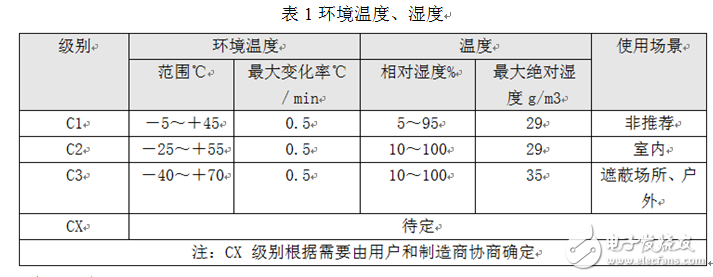
2. **Power Requirements**
The AC three-phase four-wire power supply is used. In case of system failure (such as two-phase power disconnection under three-phase four-wire power supply), the terminal should still operate normally. Specific power supply technical parameters include:
- Rated voltage: AC220V/380V, 50Hz;
- Permissible deviation: -30% to +30%;
- When the terminal is powered on/off or the power supply voltage rises or drops gradually, it should not malfunction or misfire. After the power returns to normal, it should automatically resume normal operation.
- Data saved should not be lost after power restoration, and the internal clock should continue running normally.
3. **Functional Requirements**
The terminal functionality comprises basic functions and extended application functions. Basic functions are mandatory, while extended functions are optional. The basic features include:
- Distribution monitoring function
- Switch acquisition
- Reactive power compensation control function
- Residual current action protector monitoring function
- Low-voltage switch position information collection function
- Power information monitoring function
- Three-phase unbalanced management function
- Transformer condition monitoring function
- Environmental status monitoring function
- Data logging and remote transmission
- Maintenance function
- Data statistics function
- Local indication function
- Time function
- Security protection
- Plug-and-play automatic configuration
4. **Technical Indicators**
- Software architecture requirements:
- Open, with third-party software portability.
- Hardware architecture requirements:
- Strong computing and storage capabilities, easy to add new business functions. The CPU should be dual-core with a main frequency above 600MHz, memory above 512MB, and FLASH above 1GB, all using industrial-grade chips.
- Analog quantities:
- Measurement range:
- Voltage: 0.7~1.3UN; 0~264V;
- Current: 0~6A;
- Frequency: 45Hz~55Hz.
- Measurement accuracy:
- Voltage: ≤±0.5%; current: ≤±0.5%; frequency: ≤0.01Hz; active power: ≤±1%; reactive power: ≤±1%; power factor: ≤±1%; apparent power: ≤±1.0%; electrical metric: ≤1.0%.
- Input status quantity:
- Supports single-point remote signaling;
- Power supply 24V;
- The software anti-shake time can be set from 10 to 60000 milliseconds, and the event recording resolution is no more than 10 milliseconds.
5. **Reliability**
The Mean Time Between Failures (MTBF) of the equipment should be no less than 50,000 hours; the service life of the terminal should be 8-10 years.
Secondly, ZLG Zhiyuan Electronics' Cortex-A9 Embedded Solution-Based Design
Grid transformation spans a vast area, necessitating equipment that is low-cost, highly stable, and adaptable to harsh environments. ZLG Zhiyuan Electronics' Cortex-A9 series core board products, with their rich interface resources and industrial-grade quality, are ideal for serving as the main controller in intelligent distribution terminals. The display control unit primarily includes functionalities such as numeric display control, matrix keyboard interaction, data download/upload, status indicator control, partial data monitoring, data analysis, and processing.
Below is an application example of ZLG Zhiyuan Electronics' industrial control core board in intelligent distribution terminals:
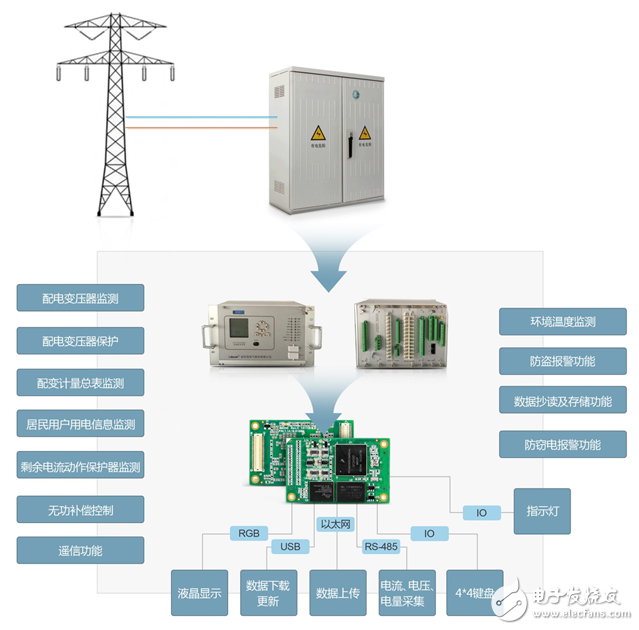
*Figure 4: Intelligent Power Distribution (Variable) Terminal Core Board Application Example*
The block diagram of ZLG Zhiyuan Electronics’ Cortex-A9 embedded solution is as follows:

*Figure 5: Block Diagram Based on Cortex-A9 Embedded Solution*
The latest technical indicators proposed by the State Grid are system requirements: developability and support for third-party software migration. ZLG Zhiyuan Electronics' Cortex-A9 industrial control core board supports embedded Linux systems and standard Ubuntu systems with secondary development and software portability to ensure system security and stability. The remaining indicators are shown in Table 2 and compared with the M6708-T parameters:
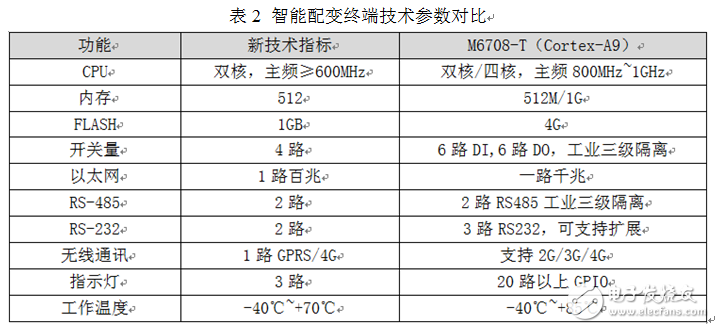
From the data in the table above, the core board of ZLG Zhiyuan Electronics' Cortex-A9 not only meets all the indicators of the new standard but also offers more advantages and functional extensions, as shown below:
- LVDS, LCD, HDMI, and other display interfaces offer options;
- Dual USB interfaces, which can be expanded to five channels via HUB to accommodate simultaneous use of multiple peripherals such as mice, keyboards, and USB drives;
- Dual CAN buses, which X86 cannot directly support;
- Dual IIC, useful for data monitoring;
- Triple multiplexed SPI to enrich the data bus for acquisition and control;
- Dual SD cards, providing one WIFI module and one TF card, with single-channel TF cards supporting up to 32G (currently supporting up to 64G);
- One standard SATA 2.0 interface, a feature only supported by quad-core boards to meet user data storage expansion needs;
- Dual Mini PCIE interfaces, one channel supporting Wi-Fi, ZigBee, LAN MiniPCIE modules; the other channel can support 2G/3G/4G WAN MiniPCIE modules.
These enhancements make the ZLG Zhiyuan Electronics' Cortex-A9 core board an excellent choice for intelligent distribution terminals, ensuring robust performance and future scalability.
Lithium Battery Cr14505,Cr14505 Lithium Battery,Primary Lithium Cells,Battery Remote Monitor System
Jiangmen Hongli Energy Co.ltd , https://www.honglienergy.com